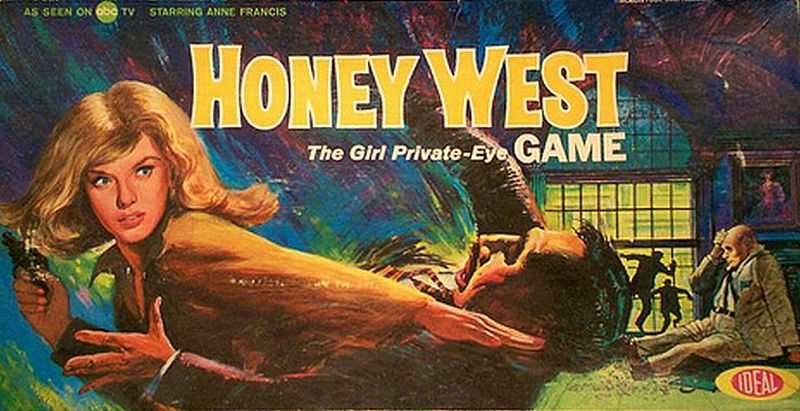 ★★★★
★★★★
“A taste of Honey.”

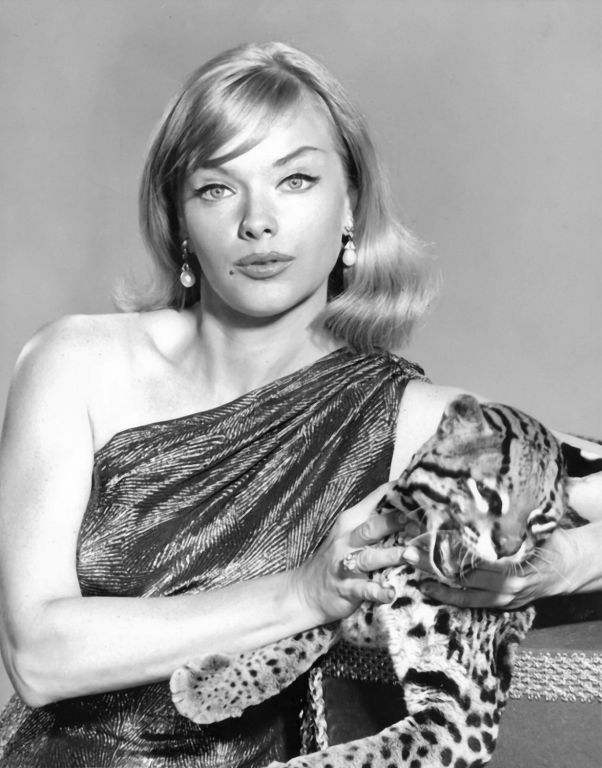 Honey West’s significance in television history can’t be exaggerated. She was the first ever woman detective to be the central character in an American network series, and was arguably the medium’s first action-heroine. Even though it ran for just one season, it helped open the doors for those who followed, such as The Girl from U.N.C.L.E., Get Christie Love and Police Woman. The show was based on a series of books by husband-and-wife team Gloria and Forrest Fickling, writing as “G.G.Fickling”. Beginning in 1957 with This Girl For Hire, eleven novels were produced over the next half-decade, and noted producer Aaron Spelling bought the rights and turned it into a TV series, originally spinning off from Burke’s Law [Gloria Fickling states they were largely screwed over by Spelling, getting little beyond a credit].
Honey West’s significance in television history can’t be exaggerated. She was the first ever woman detective to be the central character in an American network series, and was arguably the medium’s first action-heroine. Even though it ran for just one season, it helped open the doors for those who followed, such as The Girl from U.N.C.L.E., Get Christie Love and Police Woman. The show was based on a series of books by husband-and-wife team Gloria and Forrest Fickling, writing as “G.G.Fickling”. Beginning in 1957 with This Girl For Hire, eleven novels were produced over the next half-decade, and noted producer Aaron Spelling bought the rights and turned it into a TV series, originally spinning off from Burke’s Law [Gloria Fickling states they were largely screwed over by Spelling, getting little beyond a credit].
Naturally, this being the mid-sixties, the racier elements of the pulp novels had to be toned down, but the presence of Forbidden Planet star Anne Francis added its own share of potential, especially to boys of the appropriate age, which according to Francis, included Oliver Stone. But she was just as fascinating to young girls. It’s hard to appreciate in a world of Rizzoli and Isles, Prime Suspect, etc, that this presented a character which had never been seen on television. Fans included Chris, who even used to have the Honey West doll – given it now is offered on Ebay for up to $250, she wishes she had kept it, in the original box and with all its accessories.
How does the show stand up, almost fifty years later? Firstly, you have to appreciate that…well, it’s fifty years later. Most obviously, this shows in that the action is basically woeful, by modern standards. Honey’s karate skills extend little beyond flipping people on to their back, with the odd chop – and, it appears, in the sixties, everyone had a spot on their neck which would trigger immediate unconsciousness when touched. The doubling, is often painfully obviously a man in a blonde wig, though frequent stand-in (and early MMA practitioner) Gene LeBell does have decent legs. Credit in this area for the later episodes to Sharon Lucas, another stunt-double, and we should be fair and point out that no show from the time could stand against modern era in terms of action.
The unofficial lyrics
“Honey West, she’s a P.I. – for real…
Karate and judo, amazing contraptions,
gadgets, a sports car, and the latest fashions.
Plus… She… Has… Got… An… Oh… Ce… Lot!
But she’s smart, and she’s sexy,
Though her partner’s a little bit bitchy.
So that’s why we love Honey West!
(For real). |
In contrast, the show was ahead of its time in terms of gadgetry, with Honey using on an everyday basis tools that have become part of everyday life now, e.g. mobile phones, GPS, etc. Ok, the phone in question was still the size of a normal phone and attached to the car (a really neat Cobra sports model), but this was 1965. One could even argue that the sunglasses used as a two-way communication device, was the first appearance of a Bluetooth headset. Though the illusion of secrecy for these is somewhat damaged, shall we say, by the fact that, in order to communicate, you have to take the glasses off, raise the antenna, and speak directly in to the corner of the frame…
Fortunately, what works really well, and still seems as fresh and entertaining as the day the show first aired, are the characters. Honey is a delightfully feisty character, who wouldn’t seem out of place at all in the 21st century, refusing to be the “little woman” that was expected of her sex at the time. The show feels like it was an ancestor of Burn Notice, with the trio of West, partner Sam Bolt and Aunt Meg more than a little reminscent of Michael Weston, Fiona and his mother. Here, Sam has a bit of a temper, and is always trying to control Honey – despite being very clearly the junior partner [it appears the private detective agency was started by her father] But she blithely ignores him, and does exactly what she thinks best.
There is hardly ever any fat on the storylines, a necessity when you have only 25 minutes or so for the entire episode. The results are plots that are crisp, to the point and miniature models of well-done storytelling. As with the characters, they could largely be transplanted forward 45 years and used, almost without significant adjustment. Admittedly, this seemed to change towards the end of the series, with the last five or six episodes apparently written by eleven-year olds. These include such elements as Mexican gypsies with a pet gorilla in the basement, a killer robot and a bizarre, extended dream sequence where Honey imagines herself to be a movie star in a range of films. It’s a dubious contrast with the well-grounded approach to Honey’s character.
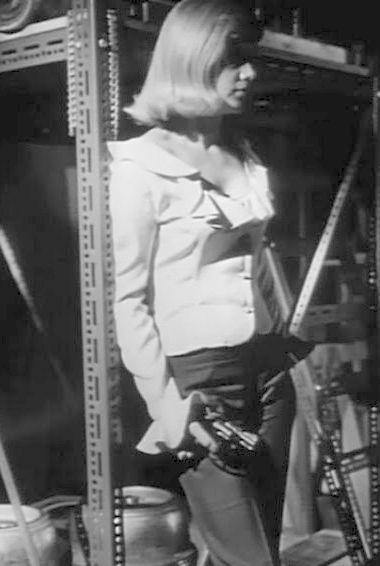 We also appreciated the parade of supporting actors, which include a significant number of familiar names, especially if you watch other shows from the era. Other names should be recognized regardless, including Kevin McCarthy, Michael J. Pollard, Richard Kiel, Joe Don Baker and Dick Clark. The music, by Joseph Mullendore, is an appropriate blast from the past, resulting in much snapping of fingers and shaking of shoulders from the GWG couch by myself and Chris. Indeed, Chris even came up with her own set of lyrics for the theme-tune, which you can find in the sidebar; we were singing lustily along with the opening credits, to the utter bemusement of our son. [The middle section is a bit tricky, and should probably only be attempted by trained professionals. We ended up going, “Raindrops on roses, and whiskers on kittens…” much of the time!]
We also appreciated the parade of supporting actors, which include a significant number of familiar names, especially if you watch other shows from the era. Other names should be recognized regardless, including Kevin McCarthy, Michael J. Pollard, Richard Kiel, Joe Don Baker and Dick Clark. The music, by Joseph Mullendore, is an appropriate blast from the past, resulting in much snapping of fingers and shaking of shoulders from the GWG couch by myself and Chris. Indeed, Chris even came up with her own set of lyrics for the theme-tune, which you can find in the sidebar; we were singing lustily along with the opening credits, to the utter bemusement of our son. [The middle section is a bit tricky, and should probably only be attempted by trained professionals. We ended up going, “Raindrops on roses, and whiskers on kittens…” much of the time!]
We have to mention Bruce, Honey’s pet ocelot. If you’re not sure what one of those is, think 30 pounds of wild feline. And, by most accounts, “wild” was the word. As Francis put it, “If a cat is happy, it bites and scratches; and if it is unhappy, it bites and scratches.” She was left bruised and in need of a tetanus shot by the end of some scenes, though Anne bore it with grace, as in the publicity pic (top left). It’s undeniably impressive to see a heroine deliver lines with impeccable aplomb, while a sizable carnivorous animal attempts to gnaw off her face. This, however, has not stopped Chris from wanting an ocelot for Christmas, I think our two geriatric dogs would object; something plush might be better for all concerned.
It’s the kind of show that, on a casual glance, is more laughable than anything – the first couple of episodes watched, we were mostly sniggering at the anachronisms and sixties stylings. But as the series wore on, that aspect ceased to be notable, and we found ourselves enjoying the relationships, snsppy repartee and characters present in the show, without any ‘ironic’ overtones. It wasn’t long before we found ourselves looking forward to watching an episode with our morning coffee, and were genuinely sorry to come to the end of the final installment.
The show initially did well enough in the ratings, making the top twenty programs, while Francis won a Golden Globe and was nominated for an Emmy, losing out to Barbara Stanwyck in The Big Valley. However, neither that nor the merchandising returns could save the show. its viewing figures were clobbered toward the end of its run by Gomer Pyle, though the decision not to renew the show for a second season was largely the result of network stinginess. As Francis remembers it, “ABC said, We can buy The Avengers cheaper than we can make Honey West. And that’s exactly what happened.” It was an ironic replacement, West being effectively “killed off” by her Transaatlantic cousin, Emma Peel.
There has been subsequent talk of a movie version, with Reese Witherspoon attached in 2001 and again in 2007, but nothing came of either project. Most recently, 7th Voyage Productions apparently bought the rights, but that was more than two years ago now, with little or no progress since. There have been a series of comics, but in a world where ABC will hand out a lot of money to botch a Charlie’s Angels remake, it’s a shame no-one has made a serious effort to reboot Honey, which in many ways is a property intrinsically better suited to the modern era.
Star: Anne Francis, John Ericson, Irene Hervey

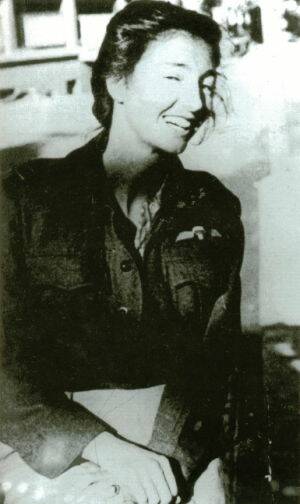 In World War II, the British SOE (Special Operations Executive) recruited and trained a number of women agents for insertion into occupied territory. There, they risked torture and execution, while carrying out missions of intelligence-gathering, subversion and sabotage. The exploits of some have received the recognition they deserve (such as Violette Szabo, who received both Britain’s George Cross and the French Croix de Guerre), but most seem to have slid through the cracks of time – Binney’s book is a solid and commendable effort to save at least a few from historical oblivion.
In World War II, the British SOE (Special Operations Executive) recruited and trained a number of women agents for insertion into occupied territory. There, they risked torture and execution, while carrying out missions of intelligence-gathering, subversion and sabotage. The exploits of some have received the recognition they deserve (such as Violette Szabo, who received both Britain’s George Cross and the French Croix de Guerre), but most seem to have slid through the cracks of time – Binney’s book is a solid and commendable effort to save at least a few from historical oblivion.




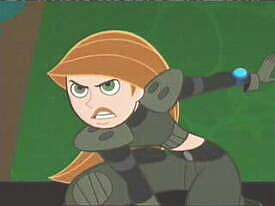
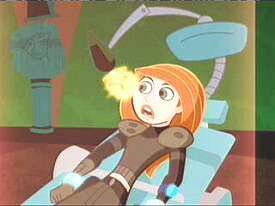 It does remain a Disney show, hence the irritating musical interludes and, while the action is fast and furious, no-one ever gets hurt – though the sequence where a naked mole-rat comes out of a kid’s trousers is frankly freaky. But assisted by a stellar supporting cast (Elliott Gould, Michael Dorn, Dakota Fanning, Michael Clarke Duncan, Vivica A. Fox and – slightly less stellar – Freddie Prinze Jr.), this is a great parody of the whole genre: as one character says, “Time travel – it’s a cornucopia of disturbing concepts.” The tongue-in-cheek self-awareness is a delight, both heroes and villains having a refreshingly world-weary attitude, cheerfully admitting the paradoxes inherent in the story. Even an evil, golfing, kilt-wearing Scot comes over as endearing rather than insulting – Mike Myers, please note. The expected fluff blends with some surprisingly dark moments, such as the “Re-education Center” which seems right out of 1984. This is what the Tomb Raider movies
It does remain a Disney show, hence the irritating musical interludes and, while the action is fast and furious, no-one ever gets hurt – though the sequence where a naked mole-rat comes out of a kid’s trousers is frankly freaky. But assisted by a stellar supporting cast (Elliott Gould, Michael Dorn, Dakota Fanning, Michael Clarke Duncan, Vivica A. Fox and – slightly less stellar – Freddie Prinze Jr.), this is a great parody of the whole genre: as one character says, “Time travel – it’s a cornucopia of disturbing concepts.” The tongue-in-cheek self-awareness is a delight, both heroes and villains having a refreshingly world-weary attitude, cheerfully admitting the paradoxes inherent in the story. Even an evil, golfing, kilt-wearing Scot comes over as endearing rather than insulting – Mike Myers, please note. The expected fluff blends with some surprisingly dark moments, such as the “Re-education Center” which seems right out of 1984. This is what the Tomb Raider movies 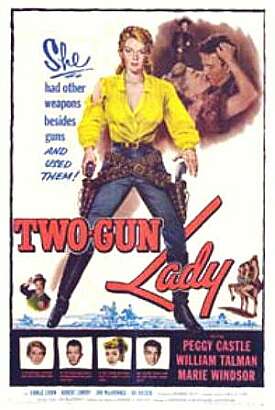
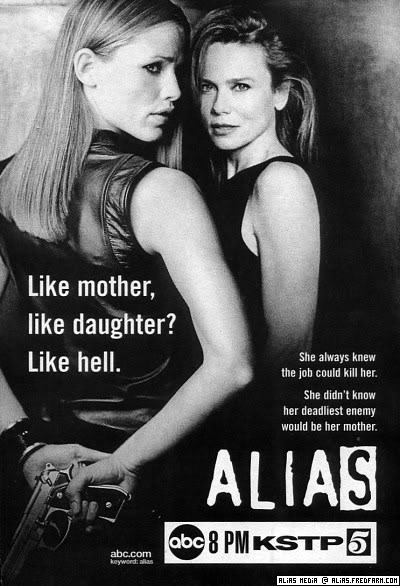
 With so many threads too, the story arcs seemed disjointed: in some cases, you’d go for weeks without hearing anything, before an abrupt reappearance. However, a continuing strength was the development of the supporting cast, with Sloane switching from evil mastermind to sympathetic antihero, even within the course of a single episode. Dixon, too, enjoyed a spectacular character arc over the second half, going from committed SD-6 employee to a borderline psychopath, whose obsession with catching Sloane surpassed even Sydney’s.
With so many threads too, the story arcs seemed disjointed: in some cases, you’d go for weeks without hearing anything, before an abrupt reappearance. However, a continuing strength was the development of the supporting cast, with Sloane switching from evil mastermind to sympathetic antihero, even within the course of a single episode. Dixon, too, enjoyed a spectacular character arc over the second half, going from committed SD-6 employee to a borderline psychopath, whose obsession with catching Sloane surpassed even Sydney’s. So where do we go in Series 3? We still have the Rambaldi machine; assembly now complete, but expect further machinations as they piece together the instruction manual, and discover they need a 240/110V convertor. :-) It looked for a moment like we would be missing one major character (who finally Got The Point), but sounds like he’s okay. However, the main thread appears to be Sydney, and her efforts to recover from what could simply be the mother of all hangovers – I mean, I sometimes wondered how I got home, but at least I usually woke up on the same
So where do we go in Series 3? We still have the Rambaldi machine; assembly now complete, but expect further machinations as they piece together the instruction manual, and discover they need a 240/110V convertor. :-) It looked for a moment like we would be missing one major character (who finally Got The Point), but sounds like he’s okay. However, the main thread appears to be Sydney, and her efforts to recover from what could simply be the mother of all hangovers – I mean, I sometimes wondered how I got home, but at least I usually woke up on the same  It’s surprising no-one has mentioned the similarity this 1991 pic has to Kill Bill, especially given QT’s liking, both for lifting plots and Hong Kong movies. Here, Cynthia Khan plays Kwanny, the daughter in a gangster family whose wedding day is interrupted by the treacherous slaughter of her intended (and a good few others). Thus explodes a spiral of revenge and betrayal, in which she gets plenty of chance to use her martial arts and gun skills. Of course, there are differences – she is unaware of her enemy within – but the overlap is striking. No doubt Tarantino will claim not to have heard of it – any more than he’d seen City on Fire, before making Reservoir Dogs…
It’s surprising no-one has mentioned the similarity this 1991 pic has to Kill Bill, especially given QT’s liking, both for lifting plots and Hong Kong movies. Here, Cynthia Khan plays Kwanny, the daughter in a gangster family whose wedding day is interrupted by the treacherous slaughter of her intended (and a good few others). Thus explodes a spiral of revenge and betrayal, in which she gets plenty of chance to use her martial arts and gun skills. Of course, there are differences – she is unaware of her enemy within – but the overlap is striking. No doubt Tarantino will claim not to have heard of it – any more than he’d seen City on Fire, before making Reservoir Dogs…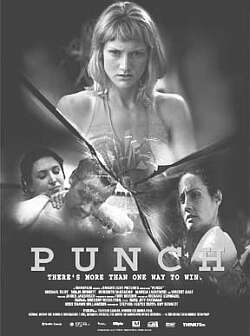 Topless Female Boxing. There. The reader is paying attention. Yet, if the subject has been covered in a less appealing way than here, I probably don’t want to see it. Indeed, as the toplessness is neither vital to the plot, nor visually pleasing, you wonder why they bothered. The main character here is 18-year old Ariel (Bennett), whose relationship with her father (Riley) is disturbingly close, to the point that she punches his date Mary (Laskowski) for using – entirely aptly – the word “creepy”. This pisses-off Mary’s sister, Julie (McGeachie), an even badder-ass than Ariel, who channels anger into the previously mentioned TFB, with a 38-0 record. She confronts father and daughter, aiming to make them fix their mistake. Viewers will likely eagerly anticipate Ariel getting her ass handed to her by Julie…
Topless Female Boxing. There. The reader is paying attention. Yet, if the subject has been covered in a less appealing way than here, I probably don’t want to see it. Indeed, as the toplessness is neither vital to the plot, nor visually pleasing, you wonder why they bothered. The main character here is 18-year old Ariel (Bennett), whose relationship with her father (Riley) is disturbingly close, to the point that she punches his date Mary (Laskowski) for using – entirely aptly – the word “creepy”. This pisses-off Mary’s sister, Julie (McGeachie), an even badder-ass than Ariel, who channels anger into the previously mentioned TFB, with a 38-0 record. She confronts father and daughter, aiming to make them fix their mistake. Viewers will likely eagerly anticipate Ariel getting her ass handed to her by Julie…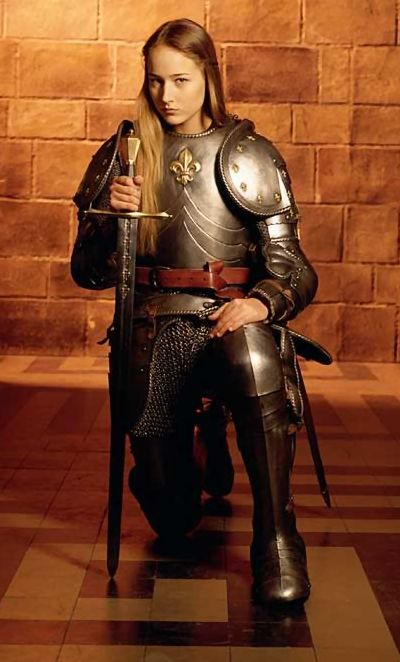
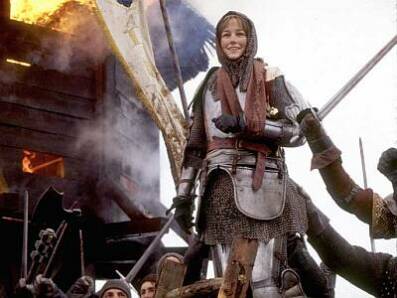 However, the main difference between this and The Messenger is that Joan of Arc is convincing. Perhaps with the advantage of having extra time (the DVD of the miniseries runs 189 minutes), they make the effort to show her interacting with other characters, and Sobieski’s calm, complete assurance is a striking contrast to Jovovich. The viewer can see why people would believe her, and it naturally follows they will too – Sobieski’s Emmy nomination was entirely well-deserved. Despite playing fast and loose with the facts (another example: Joan’s brother was not killed in battle, but lived to see her trial verdict overturned), this strong central performance holds the film together and, with the aid of the other fine actors, makes it eminently watchable. It may not be historically accurate, but it does a fine job of explaining why her myth is still honoured in the third millennium, without coming down in one camp or the other regarding the source of her visions. There are few TV miniseries worth watching, and fewer still worth owning, but this one comes highly recommended.
However, the main difference between this and The Messenger is that Joan of Arc is convincing. Perhaps with the advantage of having extra time (the DVD of the miniseries runs 189 minutes), they make the effort to show her interacting with other characters, and Sobieski’s calm, complete assurance is a striking contrast to Jovovich. The viewer can see why people would believe her, and it naturally follows they will too – Sobieski’s Emmy nomination was entirely well-deserved. Despite playing fast and loose with the facts (another example: Joan’s brother was not killed in battle, but lived to see her trial verdict overturned), this strong central performance holds the film together and, with the aid of the other fine actors, makes it eminently watchable. It may not be historically accurate, but it does a fine job of explaining why her myth is still honoured in the third millennium, without coming down in one camp or the other regarding the source of her visions. There are few TV miniseries worth watching, and fewer still worth owning, but this one comes highly recommended.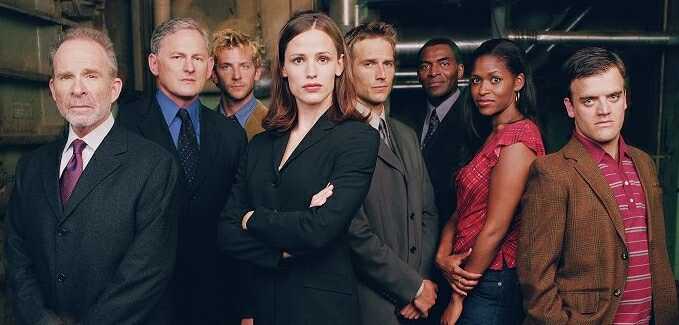

 ★★★★
★★★★ Honey West’s significance in television history can’t be exaggerated. She was the first ever woman detective to be the central character in an American network series, and was arguably the medium’s first action-heroine. Even though it ran for just one season, it helped open the doors for those who followed, such as The Girl from U.N.C.L.E., Get Christie Love and Police Woman. The show was based on a series of books by husband-and-wife team Gloria and Forrest Fickling, writing as “G.G.Fickling”. Beginning in 1957 with This Girl For Hire, eleven novels were produced over the next half-decade, and noted producer Aaron Spelling bought the rights and turned it into a TV series, originally spinning off from Burke’s Law [Gloria Fickling states they were largely screwed over by Spelling, getting little beyond a credit].
Honey West’s significance in television history can’t be exaggerated. She was the first ever woman detective to be the central character in an American network series, and was arguably the medium’s first action-heroine. Even though it ran for just one season, it helped open the doors for those who followed, such as The Girl from U.N.C.L.E., Get Christie Love and Police Woman. The show was based on a series of books by husband-and-wife team Gloria and Forrest Fickling, writing as “G.G.Fickling”. Beginning in 1957 with This Girl For Hire, eleven novels were produced over the next half-decade, and noted producer Aaron Spelling bought the rights and turned it into a TV series, originally spinning off from Burke’s Law [Gloria Fickling states they were largely screwed over by Spelling, getting little beyond a credit]. We also appreciated the parade of supporting actors, which include a significant number of familiar names, especially if you watch other shows from the era. Other names should be recognized regardless, including Kevin McCarthy, Michael J. Pollard, Richard Kiel, Joe Don Baker and Dick Clark. The music, by Joseph Mullendore, is an appropriate blast from the past, resulting in much snapping of fingers and shaking of shoulders from the GWG couch by myself and Chris. Indeed, Chris even came up with her own set of lyrics for the theme-tune, which you can find in the sidebar; we were singing lustily along with the opening credits, to the utter bemusement of our son. [The middle section is a bit tricky, and should probably only be attempted by trained professionals. We ended up going, “Raindrops on roses, and whiskers on kittens…” much of the time!]
We also appreciated the parade of supporting actors, which include a significant number of familiar names, especially if you watch other shows from the era. Other names should be recognized regardless, including Kevin McCarthy, Michael J. Pollard, Richard Kiel, Joe Don Baker and Dick Clark. The music, by Joseph Mullendore, is an appropriate blast from the past, resulting in much snapping of fingers and shaking of shoulders from the GWG couch by myself and Chris. Indeed, Chris even came up with her own set of lyrics for the theme-tune, which you can find in the sidebar; we were singing lustily along with the opening credits, to the utter bemusement of our son. [The middle section is a bit tricky, and should probably only be attempted by trained professionals. We ended up going, “Raindrops on roses, and whiskers on kittens…” much of the time!]
 Ng, in particular, nails her part with a relish that’s just fabulous, but Kelly Yao also does surprisingly well – her role is perhaps the most pivotal in the plot, and she’s required to do more than look pretty, which she does with a maturity and confident poise that borders on the balletic. Yau is about the closest to a sympathetic character the film has, being largely the victim of unfortunate circumstances, while Yam has pretty much made a career out of playing the troubled cop, and could do this kind of job with his eyes shut. Indeed, given the vomiting required, he largely does.
Ng, in particular, nails her part with a relish that’s just fabulous, but Kelly Yao also does surprisingly well – her role is perhaps the most pivotal in the plot, and she’s required to do more than look pretty, which she does with a maturity and confident poise that borders on the balletic. Yau is about the closest to a sympathetic character the film has, being largely the victim of unfortunate circumstances, while Yam has pretty much made a career out of playing the troubled cop, and could do this kind of job with his eyes shut. Indeed, given the vomiting required, he largely does.